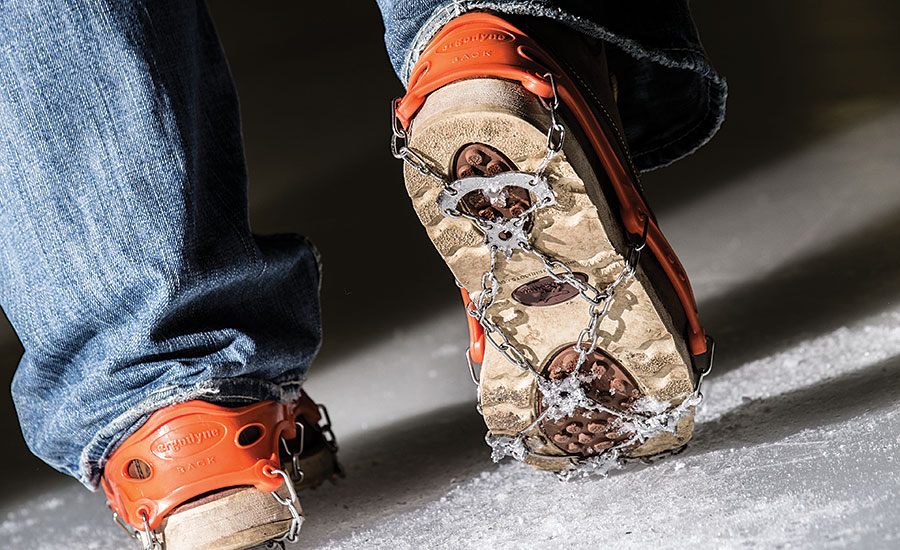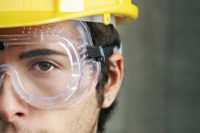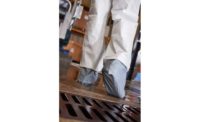If more than a quarter century of America’s Funniest Home Videos has taught us anything, it’s that people fall (a lot) and other people find those falls hilarious. And if the only injury that results is a bruised ego, they can be. But considering that slips, trips, and falls are the second most common cause of accidental deaths in the U.S. every year (behind only traffic accidents1), those accidents can be no laughing matter.
Indeed, the cost for these injuries on the job is staggering. An estimated 3.8 million disabling work injuries are caused each year by slips, trips, and falls, accounting for 12-15 percent of all workers’ compensation costs … and the average cost of a slip, trip, and fall claim is $22,000.2
Conscientious slip prevention
Conscientious slip prevention should focus on how walking surfaces and footwear interact. At indoor jobsites, the selection of flooring, waxes, and maintenance procedures plays a key role. Prompt cleanup of contaminants such as oil, spilled water, or other potential liquid lubricants is essential. Outdoor surfaces can be more difficult to control due to changing environmental conditions. But the real challenge comes when employees travel as part of their work, taking them away from controlled environments, or subjecting them to changing conditions.
Employees should start by wearing sensible shoes for the expected environment. They should avoid shoes with smooth soles, pointed heels, slip-on designs, or other styles that prioritize appearance over support. Where dress shoes are required, other footwear may be needed getting there. Worn or damaged footwear should be repaired or replaced.
Widespread risks
This risk applies to almost all employees, including those who normally work in offices, as well as those who travel for service, delivery, sales, or other activities (even commuting). States in the Midwest, Mid-Atlantic, and Northeast are at-risk for snowstorms, hail, ice storms, and the thin, hard-to-see layer of “black ice” that forms on ramps, steps, roadways, etc. Even the ordinary act of getting in and out of vehicles can pose a risk, unless the occupant is prepared. Poor lighting, or glare, can hide risks as the sun goes down and temperature drops.
Even deeply lugged soles – which work great in mud, snow, gravel, etc. – may be inadequate for ice. Wearing some type of personal ice-traction device may be a better option than scattering rock salt or kitty litter in front of you as you walk. Occupational use of studded footwear has been accepted for decades. For example, traditional lumberjacks wear “caulked” boots with spiked soles to prevent slipping and mountaineers/ice climbers wear metal “crampons” strapped to their boots.
Traction devices
While appropriate for select occupations in certain climates, cleated footwear may not always be the best option for periodic or intermittent use, or if there are unexpected weather changes. In those cases, some type of easy to put on and easy to remove traction accessory might be a better choice.
Ice-traction devices should be easy to put on and take off, and convenient to keep with you. Devices with complex straps or buckles that could freeze may not be a wise choice.
Studs or spikes should generally provide traction at both the heel and mid-foot areas where foot contact is concentrated. But, in some cases, special designs should be considered. For example, “heel-only” traction devices may be preferred by workers who regularly climb ladders, or who operate pedals in vehicles or equipment, where studs or spike across the middle of the foot could be uncomfortable or interfere.
Of course, quality is important. Work-grade durability should be expected for occupational use. While versions of anti-slip devices have been available for generations, designs and materials have improved. Modern thermoplastic elastomers (TPE) are both durable and tested for cold weather use: snapping like a cheap rubber band would not be appreciated on a bitter winter day. Traction studs should be hard enough to dig into ice, but not so hard that they become brittle and chip or shatter on pavement. Replaceable studs extend the life of traction devices.
Some companies provide ice-traction devices as standard issue to delivery drivers, route salespeople, etc., as part of their loss control efforts. Others identify suitable devices and make them easy to obtain by promoting them to employees as part of a group buy or with purchase subsidies as part of a 24/7 safety program. An easy option is to include them in an established safety footwear program covered by annual stipends or allowances.
Whatever the approach, personal ice-traction devices help employees put their best foot forward and proceed confidently and safely – whether or not cameras are rolling nearby.
Resources
1. Slip And Fall Prevention - Workers Compensation Fund https://www.wcf.com/slip-and-fall-prevention
2. Prevent Slips, Trips, And Falls - SAIF Corporation http://ehs.uoregon.edu/files/uploads/S918_SlipTripFall_book.pdf



